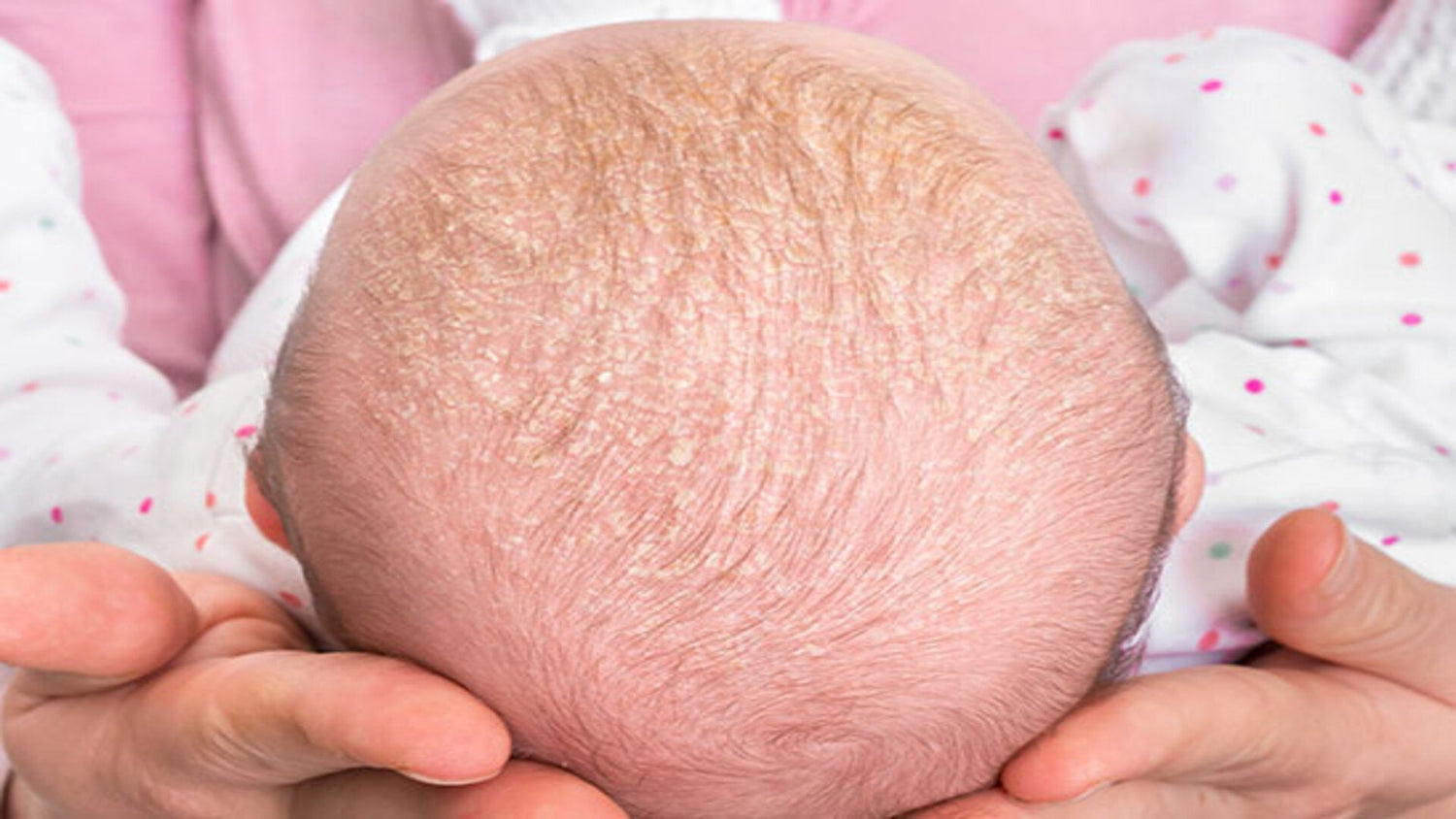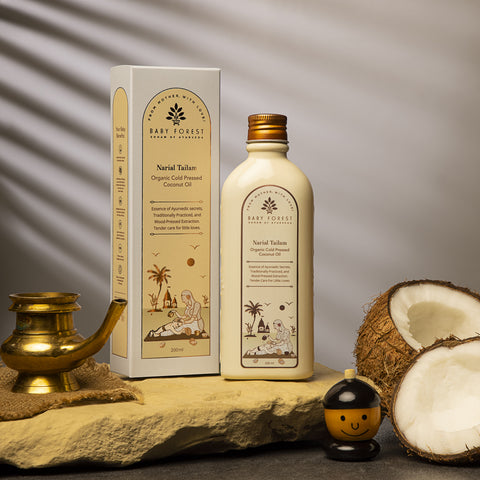
Understanding Your Menstrual Cycle and Ovulation



Essential Oils Benefits for Babies: A Complete Guide for ...

Buying a Baby Towel? Here’s what you need to know!

Newborn’s First 24 Hours: Essential Guide and Tips

Here Are The Best Ways to Treat Diaper Rashes: Home Remedies

Benefits of Baby Rose Water for Your Little One

The Benefits of Using Dry Sheets in Diaper Changing and S...

5 Must-Know Tips For Your Baby’s First Winter

Home Remedies for Babies! As Grannies Knows the Best!

Essential Tips for a Perfect Beach Day with Kids this Summer

Gentle Cleaning: Tips for Using Baby-Safe Liquid Detergent

Which Baby Body Wash Is Right for Your Little One?

What is the Difference Between Natural Fragrance and Adde...

How to Choose the Right Pacifier for Your Baby's Comfort ...

The Benefits of Regular Baby Massages - A Parent's Guide

Top Summer Baby Care Essentials for Your Little One

Benefits of Baby Massage for Newborns - A Guide on How to...

Essential Products for Winter - Your Comprehensive Checkl...

The Ultimate Guide to Baby Face Creams

Effective Tips for Managing Bedwetting

Common Skin Conditions in Babies: An Expert Guide for Par...

Best Ways to Get Rid of Mosquitoes This Monsoon

Why Talc-Free Baby Powder Is the Ideal Choice for Infants

07 Things to Know Before You Buy a Baby Cradle in India

Prepare Your Baby for Winter: Tips for Dry Skin Care

A Healthy Night Routine For Your Baby's Good Sleeping Habits

Must-Have Baby Essentials for a Safe and Comfortable Monsoon

Baby Bath Ritual: An Essential Ritual for Baby’s Growth &...

The Benefits of Using Water Wipes for Your Baby's Delicat...

How to Pick Safe Essential Baby Care Products

Tips to Choose the Best Baby Lotion For Your Newborn

A Comprehensive Guide To Choose The best pillow for your ...

Shishu Abhyanga (Baby Oil Massage): The Ancient Ayurvedic...

The Importance of Using a Gentle Comb for Your Baby's Hair

The Essential Guide to Perfect Swaddling: Techniques and ...

Why Talc-Free Baby Powder is a Must for Summer Heat?

The Ultimate Baby Bathing Checklist for Your Baby's First...

Winter Dry Skin in Babies: Why Lotion is a Must-Have This...

Baby Loi Ubtan: Traditional & Modern Care for Stylish Moms

Does Your Baby Need Face Cream? Here's What You Should Know

How to Soothe Your Newborn's Hiccups

What to Do When Your Baby's Tummy is Upset

How to Perform an Abhyanga Massage for Babies

Exploring the Benefits of Lavender Oil for Babies

Top Tips for Choosing the Safest and Most Comfortable Bab...

Why Is My Baby Sneezing So Much? Understanding Newborn Co...

How to Create a Simple Baby Skincare Routine this Winter

Avocado Oil For Babies: Gentle Benefits Of Nourishing Oil

How to Use Baby Vapour Rub for Cough Relief

Natural Baby Soaps for Chemical-Free Bath Time

Benefits of Eucalyptus Oil in Baby Products: A Natural Ch...

Understanding Your Menstrual Cycle and Ovulation

How to Manage Screen Time for Kids in a Digital Age

A Fun Guide to the Chinese Gender Prediction Chart for Expecting Moms

How to Choose Right Feeding Bottle: A Step-by-Step Guide

Baby Names Inspired by Bollywood Superstars & Movie Characters
One common puzzle that many new parents encounter is the cradle cap. This harmless but often perplexing condition can leave tiny scalps looking a bit flaky. In this article, we'll understand cradle cap, its causes, treatment options, and proactive measures parents can take to keep their little one's scalp healthy and happy.
Cradle cap, scientifically termed seborrheic dermatitis, is a prevalent skin condition that commonly manifests in infants within the initial months of their lives. This condition is typically identified by the presence of yellowish, greasy scales on a baby's scalp, making it look like a mild case of dandruff. Though a cradle cap isn't itchy or painful for your baby, it can understandably cause concern for parents.
A cradle cap tends to make its debut in the first few weeks of a baby's life and can persist for a few months. While it might be a bit unsightly, the good news is that the cradle cap in infants is temporary and usually resolves on its own without causing any long-term issues for your little one.
Cradle cap tends to impact approximately 10 per cent of newborns within their first month, with the prevalence soaring to 70 per cent by the time they reach three months old. Surprisingly, the occurrence diminishes significantly to only 7 per cent in infants aged 1 to 2 years.
A simple yet effective way to manage cradle caps is through gentle shampooing. Opt for a mild, organic baby shampoo, using warm water to soften the scales before gently massaging and rinsing the scalp.

Gently massaging your baby's scalp with your fingers using a natural hair massage oil can help loosen and lift the scales. Massage with a natural and baby friendly hair oil not only aids in the removal of cradle caps but also provides a comforting and bonding experience for both parent and baby.
Using a soft baby brush or comb, carefully brush through the baby's hair to remove loose scales. Be gentle to avoid irritating the scalp, and always ensure the tools are clean and safe for your little one. The Sunehere Resham baby comb is a wooden hairbrush made of natural elements with super soft bristles for infants and kids. It gets rid of the cradle cap and releases natural oils in the baby’s hair and skin without damaging or scratching.

For parents who prefer natural remedies, applying a small amount of coconut oil or almond oil to the affected areas before washing can help soften and loosen the scales. Always test a small patch to ensure your baby doesn't have any adverse reactions.

Opting for organic baby products can make a significant difference in preventing and managing cradle caps. Look for shampoos and skincare items with natural ingredients, free from harsh chemicals that could potentially worsen the condition.
While cradle caps are generally harmless, consult your pediatrician if you notice persistent redness or inflammation or if the condition spreads beyond the scalp. In rare cases, a prescription medication may be recommended.
A cradle cap may be a temporary visitor on your baby's scalp, but understanding its causes and treatment options can empower you as a parent. Embrace a gentle and organic approach to your baby's skincare routine, promoting a healthy scalp from the start. By incorporating these proactive measures, you can ensure that the cradle cap becomes just a fleeting moment in your parenting journey, leaving you with a happy and content baby.

